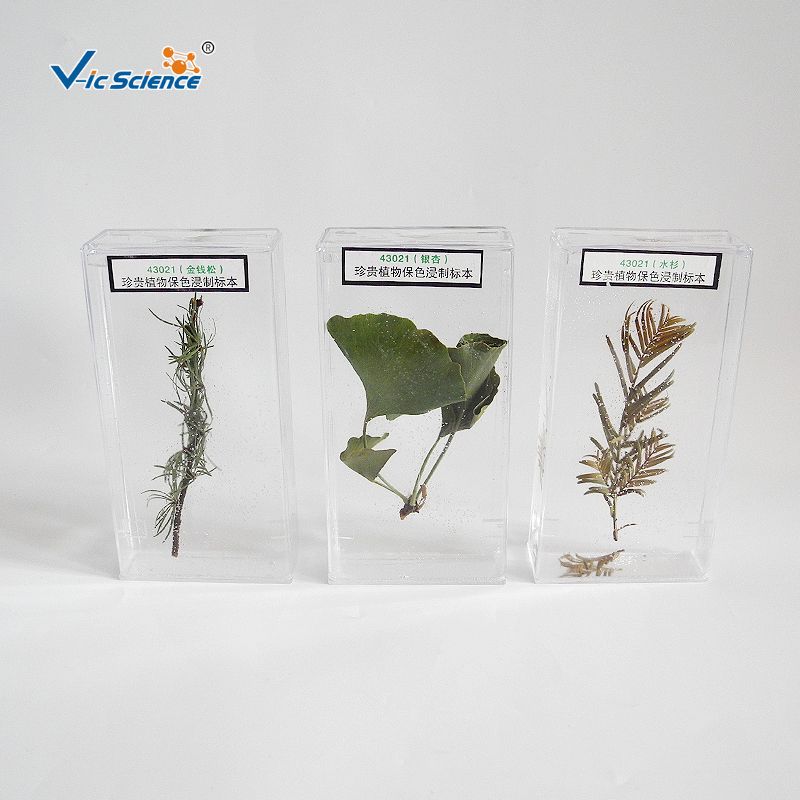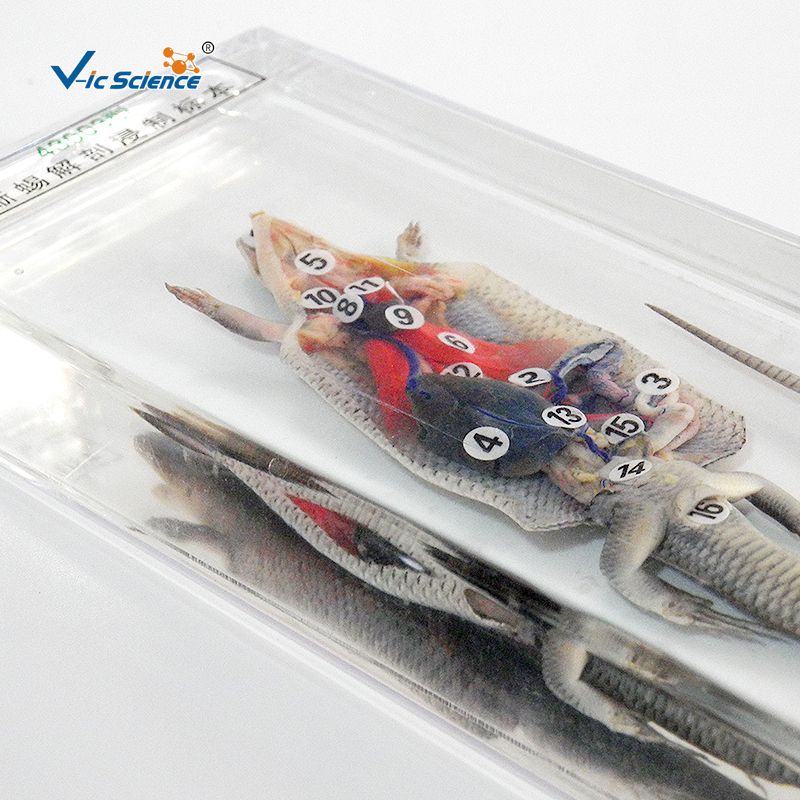Industry news
The Application of Immersion Specimen in Teaching

Immersion specimens have various applications in teaching:
1、 Visual display of biological morphology and structure
Plant teaching: In botany teaching, soaking specimens can effectively showcase the organs of plants. For example, when displaying immersed specimens of flowers, students can clearly see the number, shape, and color of petals, as well as the structure of stamens (including stamens and pistils). Soak specimens like lilies allow students to observe that they have 6 petals, 6 stamens, and 1 pistil, and can be stored for a long time, making it convenient for students to observe at any time without being limited by the flowering period. For the fruits and seeds of plants, soaking specimens can also display their external morphology and internal structure. For example, by soaking pea pod specimens, students can see the arrangement of pea seeds in the pods.

Animal teaching: In animal science teaching, specimen immersion allows students to intuitively understand the appearance of animals. Taking fish as an example, immersion specimens can display the fish's body size, types of fins (dorsal fin, pectoral fin, pelvic fin, anal fin, and caudal fin), and their positions. Students can observe the morphological differences of fins in different fish species, such as the elongated dorsal fin of crucian carp and the wider dorsal fin of fighting fish. For some small invertebrates, such as earthworm specimens, their link structures can be clearly presented, helping students understand the characteristics of link animals.
2、 Assist in explaining knowledge of biological classification
Classification display: Immersion specimens can serve as physical display materials for biological classification. For example, when explaining the classification of vertebrates, display immersion specimens from different classes (such as fish, amphibians, reptiles, birds, and mammals). By comparing the immersion specimens of fish (with gill respiration and fins) and amphibians (with gill respiration for juveniles, lung respiration and skin assisted respiration for adults, and limbs), students can more intuitively understand the main differences between different classes and master the basic knowledge of biological classification.

Species diversity presentation: Teachers can use immersion specimens to display species diversity within a specific group. For example, when explaining the insect class, display immersion specimens of various insects such as locusts, butterflies, bees, etc. Students can observe differences in wing morphology (locusts have leathery forewings and membranous hindwings, butterflies have colorful and membranous wings) and mouthparts types (locusts have chewing mouthparts, butterflies have siphon mouthparts), and appreciate the richness and diversity of insect species.
3、Help understand the ecological relationships of organisms

Food chain display: A simple food chain model can be constructed for teaching through a series of immersion specimens. For example, by displaying immersion specimens of plankton, small fish, and large fish, teachers can explain the relationship between plankton as primary producers being preyed upon by small fish and small fish being preyed upon by large fish, allowing students to better understand the energy flow in the food chain and ecosystem.
Biological habitat environment correlation: Immersion specimens can also be combined with an introduction to the biological habitat environment. For example, when displaying immersion specimens related to mangrove ecosystems, immersion specimens such as mangrove plants (such as okra), fiddler crabs, and mudskippers living in mangroves are also displayed, accompanied by pictures or videos of the muddy intertidal environment of mangroves, allowing students to understand the interrelationships between these organisms and their environment.
TOP
